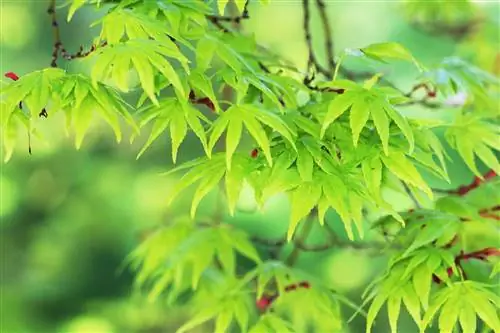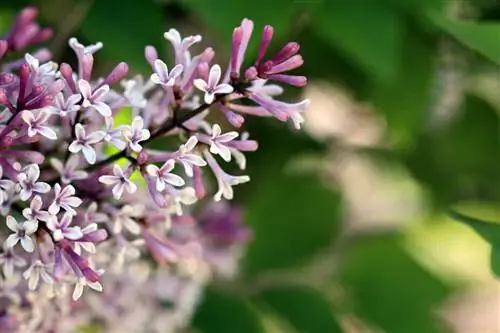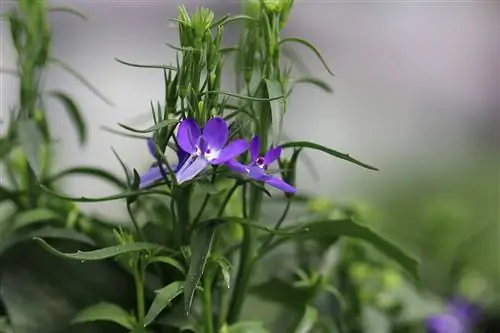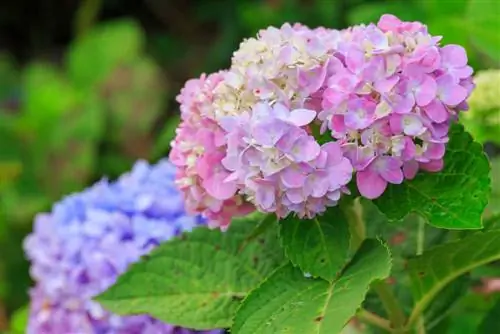- Author admin [email protected].
- Public 2023-12-17 03:39.
- Last modified 2025-06-01 06:48.
Lobelias, the best known of which is the Mannestreu, are suitable as an arrangement between geraniums and petunias, but also as a container subplant. Their actual home is Africa, but they have conquered their home here, as they are a splash of color among the most diverse flower arrangements.
The plant is a bellflower family and grows up to 30 cm high. A sunny location and plenty of water reward you with a magnificent display of flowers. The lush sea of flowers appears from June until the first autumn frosts.
Differently colored lobelia flowers
Lobelias come in different flower colors in red or white or in a bright blue. The perennially flowering balcony plant blooms until the first frost. Some lobelias are perennial, but in our latitudes the annual plant is preferred. If a cool room is available for overwintering, it is worth trying to overwinter the lobelias. However, there is no guarantee that the plant will make it to spring. If overwintering is desired, it is best in the form of seeds.
The lobelia is not only a flowering wonder in boxes, it can also be used as a ground cover and especially in sunny locations. As filler or border plants on tall stems or as underplanting in pots and containers, the lobelias are a feast for the eyes. The hanging lobelias are also attractive as hanging plants.
- ideal as a balcony plant
- Bed planting and pot planting possible
- bicolor, multicolor and monochrome in bloom
- the growth habit is bushy and dense
Popular location for lobelias
Lobelias can be sown from January to March. The seeds should not be covered with soil and they should be kept warm and bright. As soon as the seedlings emerge, they are pricked out in clusters of four to six plants and, after the ice saints, are placed in the intended containers or outdoors at the end of May. The location of the lobelias is the sun; they wither in partial shade. In May before planting you can enrich the soil with garden compost. For tubs and pots, a standard soil mixed with slow-release fertilizer is sufficient. The soil in which the lobelias are planted loves it moist. If they dry out, the leaves and flowers quickly become unsightly. If the lobelias are placed outdoors, there should be a distance of approx. 15 centimeters between them - in boxes and pots there should be enough approx.10 centimeters distance.
- Sowing from January to March
- sunny location and moist soil
- Mix standard soil with slow-release fertilizer
Caring for lobelias
The plants want fresh soil that should never really dry out. Depending on where the plant is, it should be watered constantly. Humus-rich soil is crucial for splendid growth. Incorporating compost and horn shavings, for example, is recommended. In order to get a permanent carpet of flowers, you should cut the plant back by a third after its main flowering, which is around the end of July. The second flowering then lasts until autumn. You can also cut lobelias in midsummer if they look a bit shaggy. But then only cut moderately and continue to fertilize.
The lobelias bloom very decoratively, but one variety of Lobelia erinus (Männertreu) is poisonous. If there are small children in the household, you should avoid this wonderfully flowering plant!
- Avoid waterlogging
- Inserting a drainage layer when planting in containers
- fertilize regularly with horn meal or flower fertilizer
Different varieties of lobelia
Lobelia erinus is cultivated as an annual, but according to the botanical classification it is one of the perennials. The species, which comes from South Africa, reaches a height of 10 - 30 cm and has light green leaves. It produces a profusion of blue flowers from late spring through fall. Numerous varieties come from Lobelia erinus. Cambrigde Blue has a compact growth habit and produces light blue flowers. Cascade Mixed is a mixture of hanging forms with blue, purple, red and white flowers, some with a white eye. Crystal Palace, a lobelia variety with deep blue flowers, boasts bronze-colored foliage. Mixed Shades is a mixture of compact varieties whose flowers are colored red, blue, purple or white. Mrs. Clibran grows bushy and is characterized by rich violet-blue flowers with a white eye. Red Cacade, a hanging lobelia with burgundy flowers that have a white eye.
In addition to the blue-flowering lobelia, the men's faithful, there is the white lobelia Lobelia alba and the Lobelia cardinalis. The latter enchants with bright red flowers that grow like grapes and on strong stems. It can grow up to 120 cm tall. Lobelia fulgens grows up to 50 cm high and has dark red flowers and very attractive-looking foliage. The magnificent lobelia is also often planted as a cut flower. But it is just as suitable for the bed as for balcony planting. In this type of lobelia, different lobelias were crossed. It can grow up to 70 cm high. Red, purple or blue flowers appear until September. If you want to propagate your lobelia, you can do so by sowing seeds or dividing the root ball. These are just a few types of the flowering miracle lobelia.
Propagation of lobelias
Plants are propagated by seeds from January to March. Since lobelias are light germinators, the seeds need light to germinate. Therefore the seed must not be covered with soil. The best method for sowing is not too densely. To ensure good contact with the soil, press the seeds onto the moistened soil (substrate) with a flat object. Alternatively, you can cover the cultivation container with foil. This creates the correct germination temperature of approx. 16 degrees Celsius.
- Lobelias are light germinators,
- do not put soil on the seeds,
- don't sow too densely.
Pests and diseases
Slime or feeding marks are usually a snail problem. If the lobelias are affected, the soil should be tilled regularly. If infested, slug pellets or roundworms (as beneficial insects) can be used. If the lobelia has leaf spots, it is a fungal disease or bacterial infection. Bacterial infestation appears in square spots with yellow edges. A fungal disease is rounded with an area of fruiting bodies. The damaged parts should be removed; if a fungal disease occurs, a fungicide should be used. But usually it can be said about the lobelia that it is not susceptible to diseases. Damping-off disease, which is caused by a soil fungus, could also be mentioned as a disease. This type of disease mostly affects seedlings. Root rot can also occur.
Conclusion: Interesting facts about lobelias in brief
The lobelias impress with their abundance of flowers. As a decorative eye-catcher, they are suitable for balcony planting as well as bed planting. The lobelia likes a sunny location and moist soil.
- Height 10 - 30 cm
- Planting distance 10 cm
- Bloom from late spring to autumn
- Nutritious, moist soil
- Sunny to partially shaded location
- Perennial, cultivated as an annual
Varieties that grow compact and 10 - 15cm high are very popular. The hanging forms with shoots at least 30cm long are equally valued. Their flowers appear in white, light blue, red-blue or wine red. The compact varieties look best as borders, while hanging lobelias are well suited for hanging baskets and balcony boxes.
- To cultivate lobelias, sow the seeds in late winter in seed trays filled with potting soil.
- Since lobelias are light germinators, the seeds must under no circumstances be covered with soil.
- Germination occurs at a temperature of 16 - 18 degrees Celsius.
- Later, transplant the seedlings into 8cm pots in groups of three or four,
- and continue cultivating the plants at a temperature of 13 - 16 degrees Celsius.
- In late spring they are moved to their final location in the garden.
- Lobelias thrive best in nutrient-rich, moist soil in a protected, sunny or partially shaded location.
- Pruning promotes the formation of new flowers.






